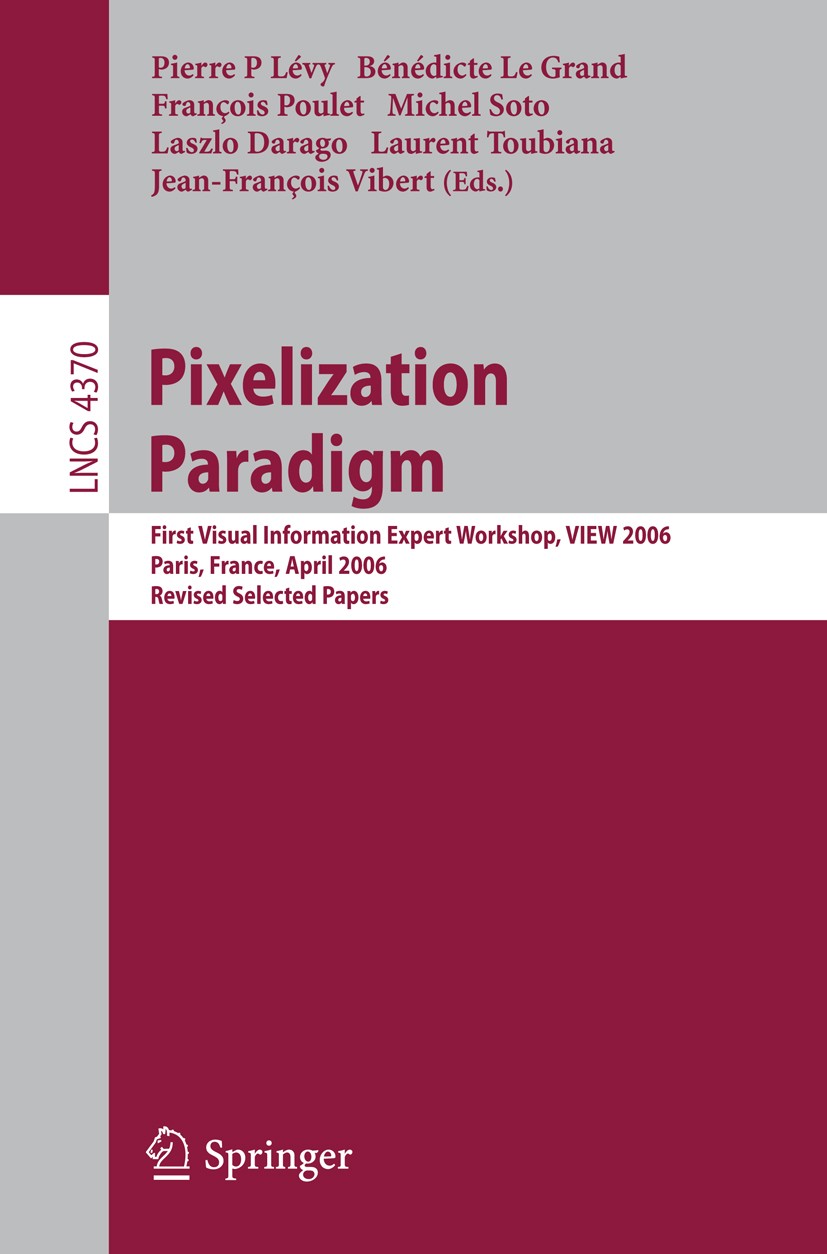| 书目名称 | Pixelization Paradigm | | 副标题 | Visual Information E | | 编辑 | Pierre P Lévy,Bénédicte Grand,Jean-François Vibert | | 视频video | http://file.papertrans.cn/749/748155/748155.mp4 | | 丛书名称 | Lecture Notes in Computer Science | | 图书封面 |  | | 描述 | The pixelization paradigm states as a postulate that pixelization methods are rich and are worth exploring as far as possible. In fact, we think that the strength of these methods lies in their simplicity, in their high-density way of information representation property and in their compatibility with neurocognitive processes. • Simplicity, because pixelization belongs to two-dimensional information visualization methods and its main idea is identifying a “pixel” with an informational entity in order to translate a set of informational entities into an image. • High-density way of information representation property, firstly because pixelization representation contains a third dimension—each pixel’s color—and secondly because pixelization is a “compact” (two-dimensional) way of representing information compared with linear one-dimensional representations (Ganascia, p.255) . • Compatibility with neurocognitive processes, firstly because we are thr- dimensional beings and thus we are intrinsically better at grasping one- or two-dimensional data, and secondly because the cerebral cortex is typically a bi-dimensional structure where metaphorically the neurons can be assimilated to “pix | | 出版日期 | Conference proceedings 2007 | | 关键词 | 2D view; 3D vision; Layout; Mapping; bioinformatics; classification; cognition; data mining; databases; featu | | 版次 | 1 | | doi | https://doi.org/10.1007/978-3-540-71027-1 | | isbn_softcover | 978-3-540-71026-4 | | isbn_ebook | 978-3-540-71027-1Series ISSN 0302-9743 Series E-ISSN 1611-3349 | | issn_series | 0302-9743 | | copyright | Springer-Verlag Berlin Heidelberg 2007 |
The information of publication is updating

|
|
 |Archiver|手机版|小黑屋|
派博传思国际
( 京公网安备110108008328)
GMT+8, 2025-12-17 13:35
|Archiver|手机版|小黑屋|
派博传思国际
( 京公网安备110108008328)
GMT+8, 2025-12-17 13:35


